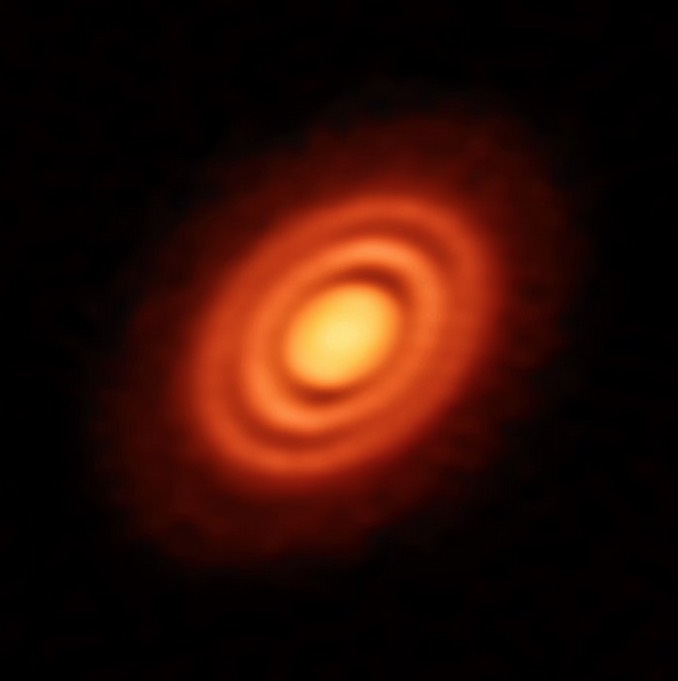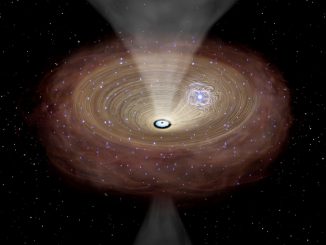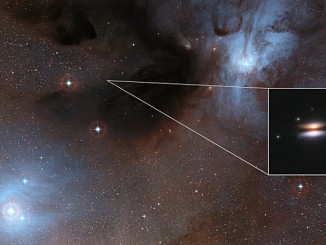
Two teams of astronomers using the Atacama Large Millimetre/submillimetre Array – ALMA – have spotted three newly formed planets orbiting an infant star in its dusty protoplanetary disc. It is the first detection of its kind.
Confirming the presence of young worlds in such dust-shrouded discs is difficult, but the teams, working independently, used a novel technique to spot the otherwise hidden worlds: studying unusual patterns in the flow of carbon monoxide molecules swirling around the star.
“Measuring the flow of gas within a protoplanetary disc gives us much more certainty that planets are present around a young star,” said Christophe Pinte of Monash University in Australia and Institut de Planétologie et d’Astrophysique de Grenoble in France, lead author of a paper describing the discovery. “This technique offers a promising new direction to understand how planetary systems form.”

Richard Teague, an astronomer at the University of Michigan and author of a second paper, agreed, saying “this entirely new approach could uncover some of the youngest planets in our galaxy, all thanks to the high-resolution images from ALMA.”
The star in question, HD 163296, is located about 330 light years from Earth in the constellation Sagittarius. Its protoplanetary disc was seen in earlier ALMA observations with gaps clearly visible between concentric rings of gas. The new observations focused on distinctive millimetre wavelength emissions from carbon monoxide molecules that indicated interactions with massive objects.

A team led by Pinte found a planet about 39 billion kilometres (24 billion miles) from the star while Teague’s team found two planets 12 billion and 21 billion kilometres (7.5 billion and 13 billion miles) out.
While they used slightly different approaches, both teams found areas in the disc where the motion of the gas was different from its surroundings, clearly showing the influence of infant planets roughly the size of Jupiter.
The new technique is less likely to generate false positives, the astronomers say, and will permit more accurate estimates of the masses of protoplanetary discs.



